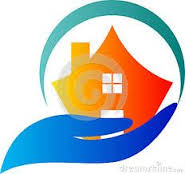Older adults can save tens of thousands of dollars annually by choosing assisted living communities over aging in place in their homes.
Unlike point solutions, Inspiren unifies resident safety, care planning, staffing, and emergency response into a single AI-powered platform.
An artificial intelligence-powered virtual assistant platform for senior living and care providers.
Betting that AI could lighten the clinician load.

 The perfect storm has arrived to drive tech adoption in the home and care services. So many factors converge now that were highlighted during the pandemic – consider the need for telehealth services as an alternative to in-person visits. The lack of broadband access for older adults limited vaccine sign-up or even communication with families or friends. The slow rollout of Wi-Fi in senior living was, to say the least, a miscalculation about the future. And last, but not least, the worsening staffing shortage, noted for years throughout the older adult service industry, is
The perfect storm has arrived to drive tech adoption in the home and care services. So many factors converge now that were highlighted during the pandemic – consider the need for telehealth services as an alternative to in-person visits. The lack of broadband access for older adults limited vaccine sign-up or even communication with families or friends. The slow rollout of Wi-Fi in senior living was, to say the least, a miscalculation about the future. And last, but not least, the worsening staffing shortage, noted for years throughout the older adult service industry, is  In the time of CES 2022 – advice to tech firms about older adults.
In the time of CES 2022 – advice to tech firms about older adults.  Family caregivers cannot provide enough care for a growing population of the 80+. You may remember.
Family caregivers cannot provide enough care for a growing population of the 80+. You may remember.